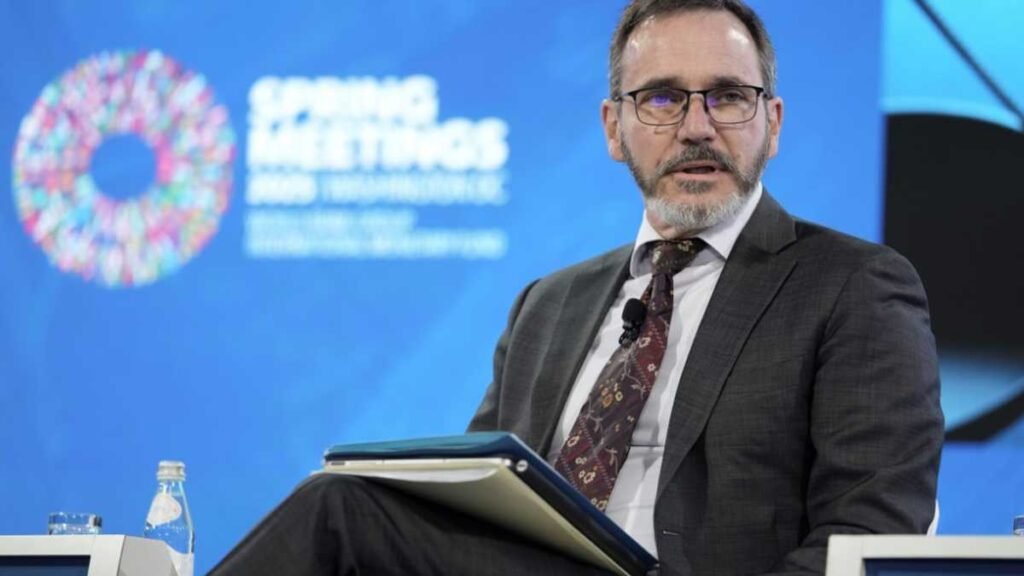Global Economic Outlook and Tariff Impacts
The International Monetary Fund (IMF) has revised its global growth forecast, signaling a more optimistic outlook for the world economy. This shift comes as countries attempt to navigate around Donald Trump’s sweeping tariffs, leading to an unexpected increase in trade activity. Despite this, the US president has softened some of his most stringent threats, contributing to a more stable economic environment.
The IMF’s latest World Economic Outlook update raised its 2025 growth projection to 3.0 percent, an improvement from the 2.8 percent forecast in April. However, the organization still anticipates a slowdown in global growth this year, with 2024’s growth standing at 3.3 percent. For 2025, the IMF now predicts a 3.1 percent expansion, which is slightly higher than its previous estimate of 3.0 percent.
Despite these positive revisions, the IMF chief economist, Pierre-Olivier Gourinchas, emphasized the need for caution. He explained that businesses have been trying to move goods ahead of potential tariff implementations, which has temporarily boosted economic activity. However, this frontloading may lead to a decline in trade later in the year and into 2026. “If you stock the shelves now, you don’t need to stock them later in the year or into the next year,” he said.
The report highlights that while the global economy has remained resilient, the current growth is more influenced by tariff-related distortions rather than underlying strength. A modest reduction in trade tensions has contributed to this stability, according to Gourinchas. However, the situation remains fragile, with ongoing negotiations between the US and China playing a critical role.
Tariffs and Their Effects
Trump imposed a 10 percent levy on almost all trading partners, along with higher duties on autos, steel, and aluminum. The implementation of these tariffs was delayed until August 1, providing some relief to affected economies. Additionally, Washington and Beijing agreed to reduce triple-digit duties on each other’s goods for 90 days, with talks ongoing for a potential extension.
The US effective tariff rate has risen significantly to 17.3 percent, far exceeding the 3.5 percent level for the rest of the world. If these tariffs were to increase further, the IMF warns that global output could decline by 0.3 percent next year.
Regional Growth Projections
For the US, 2025 growth was adjusted upward by 0.1 percentage points to 1.9 percent, with expectations that tariffs will settle at lower levels than initially announced. The country is also set to benefit from Trump’s tax and spending bill, which is expected to provide a near-term boost.
In the Eurozone, growth was revised up to 1.0 percent, partly due to increased pharmaceutical exports from Ireland to the US to avoid new duties. Germany is expected to avoid contraction, while France and Spain maintain their forecasts at 0.6 percent and 2.5 percent, respectively.
Inflation and Price Trends
While the IMF expects global inflation to continue declining, it warned that US price increases will remain above target. The report noted that tariffs act as a supply shock, gradually affecting consumer prices and hitting inflation in the second half of 2025. Conversely, Trump’s duties are seen as a negative demand shock, which could lower inflationary pressures elsewhere.
China and Other Economies
China’s growth forecast was raised by 0.8 percentage points to 4.8 percent, reflecting stronger-than-expected activity in the first half of 2025 and reduced US-China tariffs. However, Gourinchas highlighted ongoing challenges, including weak domestic demand and a struggling property sector. These factors continue to weigh on economic activity.
Russia’s growth was revised downward to 0.9 percent, influenced by domestic policies and subdued oil prices compared to 2024 levels. The situation underscores the complex interplay of global economic forces and the impact of policy decisions on regional growth.

